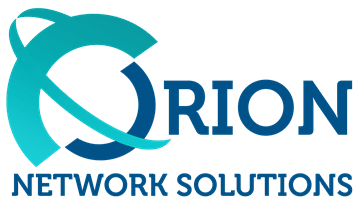Cybersecurity Concerns Facing Metro DC Nonprofit Executive Directors In 2024: Navigating the Evolving Threat Landscape
Nonprofit organizations in the Metro DC area are increasingly aware of the myriad cybersecurity concerns that impact their operations and data integrity. Executive Directors face the daunting challenge of safeguarding sensitive information from cyber threats while ensuring compliance with evolving privacy regulations. In 2024, a strategic approach to cybersecurity is critical, and it requires a comprehensive understanding of the risks at hand and the frameworks that can mitigate them. Technology and its deployment and management stand at the forefront of these concerns, necessitating a synergistic relationship between cybersecurity leadership and IT service providers.
Amid these challenges, it is paramount that nonprofits engage with adept IT services vendors that specialize in the unique needs of the sector. Orion Networks emerges as a principal partner in this landscape, providing expert guidance and tailored solutions for nonprofit organizations. Their collaboration with Executive Directors is pivotal in comprehensively addressing cybersecurity needs, ensuring a robust defense against cyber threats, and aligning with best practices in the industry. As the cyber landscape evolves, Executive Directors must couple their governance with high-level technological resources and intelligence, reinforcing their infrastructure against potential attacks.
Key Takeaways
- Nonprofit Executive Directors must prioritize strategic cybersecurity measures.
- Partnerships with specialized IT service providers enhance organizational security.
- Orion Networks is instrumental in fortifying Metro DC nonprofits against cyber threats.
Understanding Cybersecurity Risks
Executive directors of nonprofits in the Metro DC area must recognize the changing nature of cybersecurity threats, ensure compliance with evolving regulations, and defend against increasingly sophisticated social engineering attacks.
Threat Landscape Evolution
The threat landscape for cybersecurity is dynamic, with techniques and attack vectors constantly evolving. In 2024, nonprofit organizations face various digital threats, including ransomware, phishing, and advanced persistent threats (APTs). These threats are complex each year, necessitating advanced security solutions and continuous monitoring to protect sensitive data.
Regulatory and Compliance Challenges
Nonprofits must navigate a complex web of cybersecurity regulations. With standards and laws such as GDPR and CCPA influencing data practices globally, Metro DC nonprofits often experience uncertainty in regulatory expectations. Compliance is not just about avoiding fines; it’s about maintaining donor trust and ensuring beneficiary data protection.
Social Engineering Tactics
Social engineering remains a significant threat due to its reliance on human error. Techniques like phishing, pretexting, and baiting exploit staff vulnerabilities. Nonprofits must train their personnel to identify and respond to these deceptive tactics that often lead to unauthorized access to information systems.
Strategic Cybersecurity Leadership
Strategic cybersecurity leadership is vital for Metro DC nonprofit executive directors to effectively navigate the increasing cyber threats of 2024. It involves proactively aligning cybersecurity with an organization’s goals, governance, and operational priorities.
Board Engagement and Governance
Nonprofit boards must be actively involved in cybersecurity governance. They should understand their fiduciary responsibilities to oversee the development and implementation of cybersecurity strategies. Directors need to ensure that:
- Board meetings include regular cybersecurity progress updates
- There is a clear framework for risk management that identifies, assesses, and mitigates cyber threats
Setting a Security Culture
Creating a security-conscious culture within an organization is a foundational step for mitigating cyber risks. Executive directors should:
- Champion cybersecurity awareness training for all staff
- Foster an environment where security is seen as a collective responsibility
- Emphasize that proper security practices are non-negotiable and integral to the daily operations
Resource Allocation and Prioritization
Proper resource allocation is critical for effective cybersecurity. Nonprofit leaders must:
- Prioritize budgeting for essential cybersecurity tools and services
- Ensure that there are sufficient resources for both preventative measures and incident response
- Update and refine cybersecurity investment strategies in line with emerging threats and technological advancements
Cybersecurity Frameworks and Best Practices
Adopting robust cybersecurity frameworks and meticulously planning incident response are not merely suggested but are imperative for Metro DC nonprofit executives. Emphasis on continuous monitoring and improvement cements the foundation of a resilient cybersecurity posture.
Framework Adoption
Nonprofit executives in the Washington, DC, area should anchor their cybersecurity strategy on proven frameworks. The NIST Cybersecurity Framework (NIST CSF) is widely recommended comprising five core functions: Identify, Protect, Detect, Respond, and Recover. Organizations are encouraged to assess their current posture against this framework to identify gaps and prioritize improvements in their cybersecurity strategies.
- Identify: Catalog assets and systems, determine the business environment, and establish governance.
- Protect: Implement safeguards to ensure the delivery of critical services.
- Detect: Develop activities to identify the occurrence of a cybersecurity event.
- Respond: Take action regarding a detected cybersecurity incident.
- Recover: Plan for resilience and restore any capabilities or services impaired due to a cybersecurity incident.
Incident Response Planning
A well-defined incident response plan is essential for nonprofit organizations to address breaches effectively. This plan should include:
- Roles and Responsibilities: Clearly defined for every member involved in incident response.
- Communication Plan: Established internal and external communication protocols during a security incident.
- Analysis and Identification: Procedures for analyzing incidents and determining their scope and impact.
- Containment and Eradication: Steps to contain the incident and remove the threat from the environment.
- Recovery: Strategies to restore systems to normal operation while minimizing the impact on the organization’s operations.
- Post-Incident Review: A process to learn from the incident and incorporate lessons into future planning.
Continuous Monitoring and Improvement
Cybersecurity is not a one-time effort but a continuous cycle of assessment and enhancement. Nonprofit executive directors should implement:
- Continuous Monitoring: Regular inspections of network and system activities to detect and respond to threats in real time.
- Regular Risk Assessments: To identify evolving threats and vulnerabilities.
- Employee Training: Continuous staff education on cybersecurity threats and best practices.
Continuous improvement should be driven by the insights gained from regular assessments, incident responses, and industry developments to ensure that cybersecurity measures remain effective and aligned with the organization’s risk profile.
Data Protection and Privacy
In the Washington D.C. metropolitan area, nonprofit executive directors must navigate complex data protection challenges. They must also ensure compliance with evolving privacy laws, which can have varying implications on their operations.
Data Encryption Standards
Nonprofits in the Metro DC area should adhere to robust data encryption standards to safeguard sensitive information. Encryption acts as a vital line of defense against data breaches. Best practices dictate that all sensitive data, whether at rest or in transit, should be encrypted using established protocols such as AES (Advanced Encryption Standard) or RSA (Rivest-Shamir-Adleman). For instance, the data security incidents that affect for-profit entities also pose a risk to nonprofits, underlining the need for encryption even if some laws offer carve-outs for nonprofits.
Privacy Laws and Data Sovereignty
Metro DC nonprofits must remain cognizant of pertinent privacy laws, such as the California Consumer Privacy Act (CCPA) and the General Data Protection Regulation (GDPR). Though some privacy laws provide certain exemptions for nonprofits, directors should still understand these laws to ensure proper data management. Compliance with data sovereignty principles is crucial, as data must be stored and processed according to the local laws of the country where it was collected. The varying requirements underscore the importance of a well-informed data storage and management approach.
Technology and Infrastructure Management
As nonprofit executive directors in the Metro DC area navigate through 2024, they must prioritize their organization’s cybersecurity. This section will elaborate on specific cloud security management tactics, network security enhancements, and end-point protection strategies.
Cloud Security Management
Nonprofits increasingly rely on cloud services to store sensitive data and facilitate operations. Implementing robust authentication protocols and encrypted connections is crucial to protect against unauthorized access. They should also conduct regular security assessments to ensure compliance with the latest cybersecurity standards.
Network Security Enhancements
Network security must be reinforced by deploying advanced firewalls and intrusion detection systems. Nonprofits must keep their network infrastructure up to date to safeguard against evolving threats. Implementing a zero-trust network model, where each request is treated as a potential threat until verified, can significantly reduce vulnerabilities.
End-Point Protection Strategies
Every device that connects to a nonprofit’s network is a potential entry point for cyberattacks. Organizations should adopt a comprehensive end-point protection strategy that includes regular software updates and patches, anti-virus programs, and employee training to recognize and mitigate phishing attempts and other social engineering tactics.
Cyber Threat Intelligence and Information Sharing
With cyber threats evolving rapidly, Executive Directors of nonprofits in the Metro DC area must prioritize cyber threat intelligence and robust information-sharing mechanisms to protect their organizations from potential breaches.
Intelligence Gathering
Nonprofit Executive Directors must ensure their organizations have processes in place for intelligence gathering. Intelligence involves collecting information regarding specific cyber threats that target infrastructure like the Metro system. It is essential to monitor for indicators of compromise (IoCs), such as unauthorized access or attempted breaches, as evidenced in the recent Metro computer network incident involving a computer in Russia. Agencies like CISA emphasize rapid intelligence gathering to prevent widespread cyber-attacks.
- Monitor for IoCs: Continuously analyze network traffic and logs.
- Attend Briefings: Participate in government and sector-specific cybersecurity briefings.
- Leverage Resources: Utilize tools and resources provided by bodies such as the Department of Homeland Security.
Sharing Protocols and Platforms
The success of sharing protocols and platforms in disseminating critical information cannot be overstated. As recommended by security agencies, directors should establish and follow clear protocols for information sharing, both within their organization and with external partners. This includes determining what should be shared, with whom, and via which secure platforms to ensure timely and efficient communication.
- Determine Shareable Information: Identify sensitive information that can be shared without compromising privacy or operational security.
- Select Secure Platforms: Choose platforms endorsed by cybersecurity entities for secure communication.
- Engage in Partnerships: Participate in public-private cooperation initiatives to enhance cybersecurity resilience.
Nonprofits should engage with platforms and protocols that enable quick and secure sharing of cyber threat intelligence, mirroring the approach of the United Kingdom’s National Cybersecurity Center for an effective partnership with companies.
Strengthening Human Factors
In addressing the cybersecurity challenges facing Metro DC nonprofit executive directors in 2024, a significant emphasis must be placed on bolstering the human factors related to cyber defense. This involves ongoing staff training and comprehensive strategies against phishing and social engineering tactics.
Staff Training and Awareness
Nonprofit organizations should conduct regular staff training sessions that cover the latest cybersecurity practices and threats. The training must be clear-cut, engaging, and relevant to the staff’s day-to-day activities.
- Frequency: Hold quarterly cybersecurity workshops
- Content: Educate on secure password protocols, proper handling of sensitive data, and recognizing suspicious activity
- Assessment: Implement routine checks to measure the staff’s cybersecurity knowledge retention
Phishing and Social Engineering Defense
Defending against phishing and social engineering requires a two-pronged approach: technical safeguards and informed vigilance among staff members. Communication with staff should emphasize the importance of skepticism and caution when dealing with unexpected requests, especially those seeking personal or organizational information.
- Verification Protocols: Establish clear procedures for verifying the legitimacy of requests for sensitive information.
- Regular Simulations: Use simulated phishing exercises to test staff response and improve their ability to identify attempted attacks.
- Reporting Mechanisms: Ensure employees know how and where to report suspicious messages or activities quickly and without fear of reprisal.
Financial Considerations and Cyber Insurance
Executive Directors must carefully allocate financial resources for robust cybersecurity defenses and evaluate the role of cyber insurance in risk management.
Budgeting for Cybersecurity
Nonprofit organizations in the Metro DC area should allocate a portion of their budget to maintain and improve cybersecurity measures. This is a strategic investment in protecting client information and organizational data from cyber threats. Key budget items typically include:
- Software solutions like firewalls and antivirus programs
- Employee training programs on data handling and phishing prevention
- Regular security audits and risk assessments
- Incident response planning
Nonprofits must align their cybersecurity budget with the size and scope of their operations and the sensitivity of the data they handle.
Understanding Cyber Insurance Coverage
Cyber insurance has become a critical component for nonprofits looking to mitigate financial risks associated with cyber incidents. Given the rise in cyberattacks, understanding the extent of coverage is paramount. Insurance policies generally cover the following aspects:
- Incident Response: Costs associated with investigating and responding to a breach, including legal fees and public relations.
- Recovery: Expenses for data restoration and system repairs following a cyberattack.
- Liability: Legal costs if the nonprofit is sued for a breach that compromised personal information.
Selection Criteria for cyber insurance should be based on the following:
- Claims responsiveness and support services offered by the insurer
- Limits of coverage, especially for organizations in high-risk industries
- The trend of increasing premiums due to the surge in cyberattacks
Nonprofits must thoroughly assess their risk profile and insurance needs to ensure adequate coverage in the face of evolving cyber threats.
Developing a Resilient Cybersecurity Posture
As executive directors face escalating cyber threats, establishing a cyber-resilient framework is imperative. This involves crafting meticulous disaster recovery and business continuity strategies to ensure the nonprofit’s operations can withstand and quickly recover from cyber incidents.
Disaster Recovery Planning
Disaster recovery planning is a crucial facet of a resilient cybersecurity posture. Nonprofits must identify critical IT assets and ensure they are adequately backed up, with a clear recovery process outlined. Recovery Point Objective (RPO) and Recovery Time Objective (RTO) are essential metrics that should be defined, setting the maximum acceptable amount of data loss and downtime:
- Recovery Point Objective (RPO): The maximum targeted period in which data might be lost from an IT service due to a major incident.
- Recovery Time Objective (RTO): The targeted duration of time within which a business process must be restored after a disaster to avoid unacceptable consequences associated with a break in business continuity.
Business Continuity Strategies
Effective business continuity strategies enable nonprofits to maintain essential functions during and after a cyber incident. They should build redundancy into their systems and train their staff on alternative processes in case of a system compromise. Key components include:
- Incident Response Team: A dedicated group prepared to take immediate action during a cyber incident.
- Communication Plans: Clear internal and external communication protocols during an incident, including designated spokespeople and pre-drafted templates for stakeholder communications.
- Regular Testing: Frequent exercises simulating various cyberattack scenarios to evaluate the effectiveness of the business continuity plan.
Why Work With Orion Networks As Your Nonprofit Organization Cybersecurity Vendor
Nonprofit organizations in the Metropolitan DC area face unique cybersecurity challenges that require vigilant and specialized attention. Orion Networks emerges as a dependable cybersecurity vendor, offering tailored solutions that address the specific needs of nonprofits.
Tailored Cybersecurity Practices:
- Orion Networks understands that each nonprofit has different requirements and customizes its cybersecurity measures accordingly.
- The firm assesses the organization’s unique risk profile, ensuring that all aspects of the nonprofit’s operations are protected.
Comprehensive Assessments:
- Orion conducts thorough vulnerability assessments to identify and mitigate potential threats before cybercriminals can exploit them.
- These proactive measures are essential for nonprofits to maintain the integrity of their sensitive data, such as donor information and financial records.
Expertise in the Nonprofit Sector:
- With a deep understanding of the nonprofit sector, Orion Networks brings valuable insights into the common threats and challenges these organizations face.
- Their expertise enables them to offer best practices for cybersecurity, specifically curated for the nonprofit space.
Vendor Risk Management:
- Recognizing the importance of secure third-party relationships, Orion Networks analyzes vendor cybersecurity.
- They help ensure that a nonprofit’s partners and vendors adhere to stringent cybersecurity standards, thus protecting the organization from indirect attacks.
Resource Accessibility:
- Orion Networks facilitates nonprofits with essential IT support and resources that are cost-effective and efficient.
- Their services enable executive directors to focus on their core mission with the confidence that their cybersecurity posture is robust and reliable.











